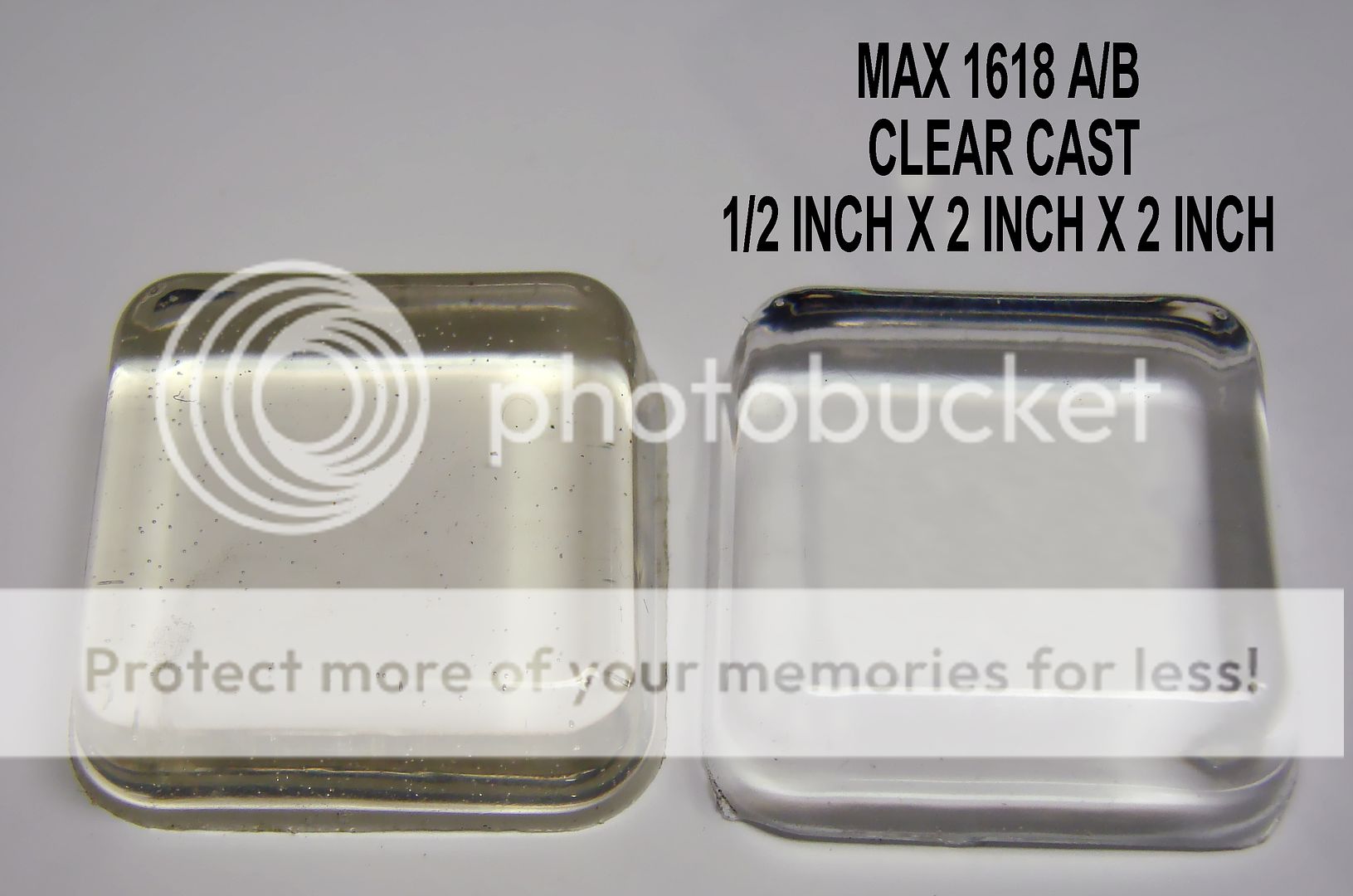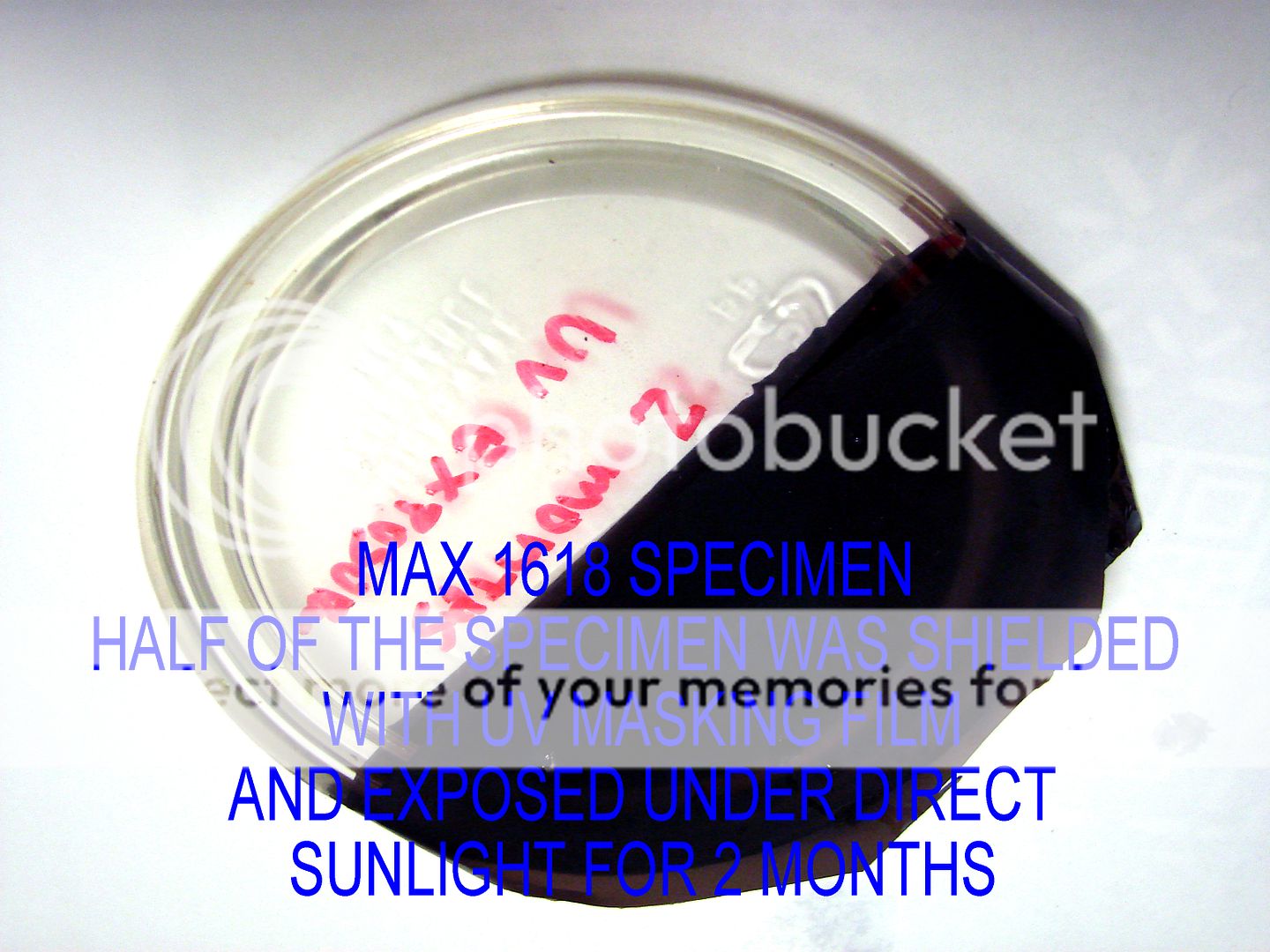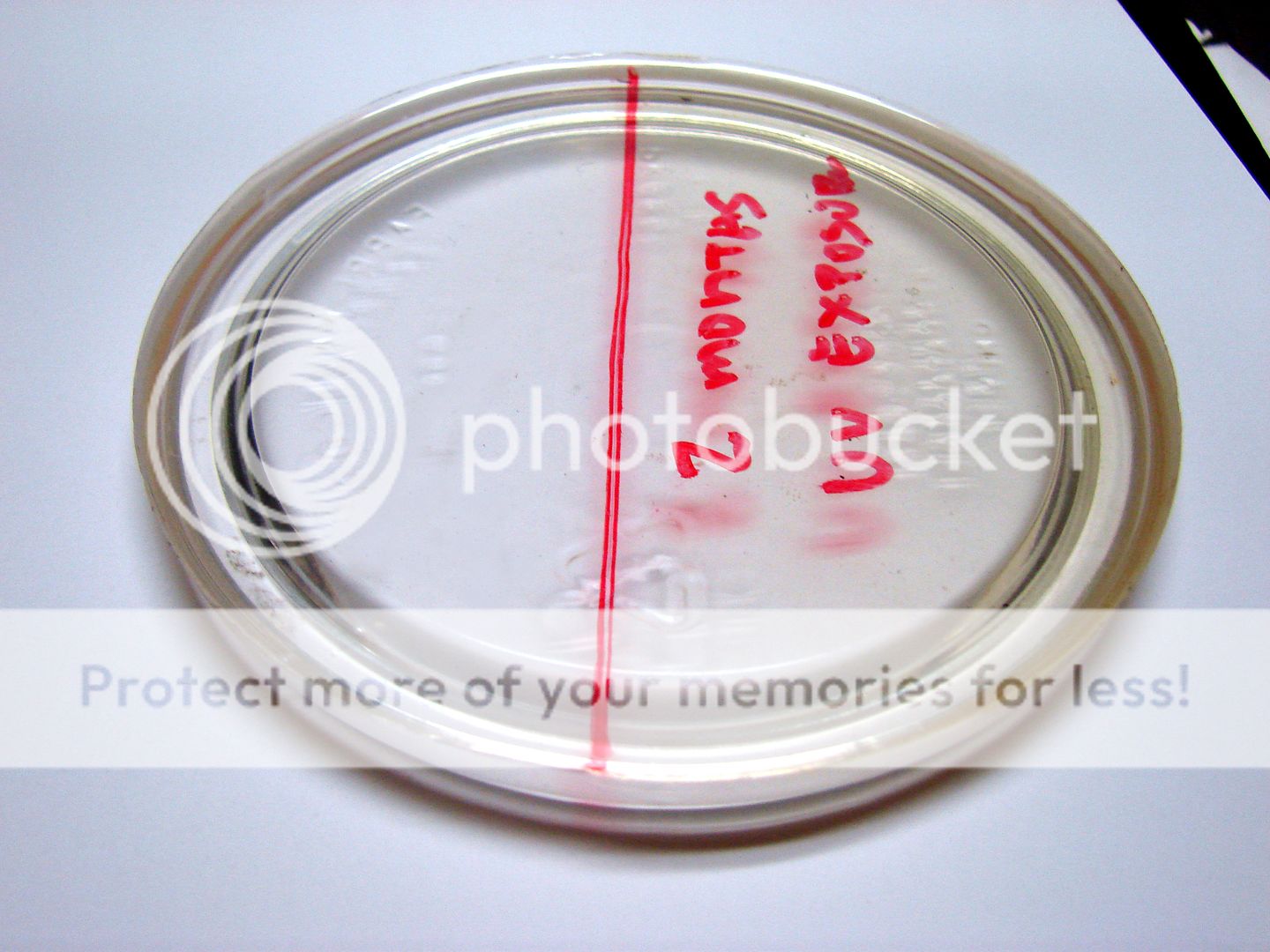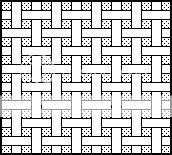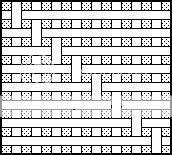THIS PAGE IS BEST VIEWED USING GOOGLE CHROME BROWSER
ADOBE FLASH PAYER MUST BE INSTALLED TO VIEW VIDEOS AND SLIDESHOWS
MAX 1618 A/B
High Performance Clear Composite Resin
Carbon Fiber, Fiberglass, Kevlar Impregnating Resin
(48 FLUID OUNCE COMBINED VOLUME)
1 QUART MAX 1618 PART A (US GALLON 128 FL.OZ)
AND
1 PINT MAX 1618 PART B (½ US GALLON 64 FL.OZ)
In our efforts to maintain our low cost price offerings, the items may be packaged in different chemical safe containers approved for storage and DOT shipping regulations.
PRODUCT DESCRIPTION
MAX 1618 A/B is our lowest viscosity resin formulation which makes it suitable for adding fillers and powders. It is also suitable for many bonding and impregnating applications where its low viscosity yields excellent wetting and resin saturation.
MAX 1618 COMPOSITES FABRICATION APPLICATIONS
TO PAUSE OR PLAY THE FOLLOWING SLIDE SHOWS,
PLACE THE CURSOR ON THE PICTURE TO ACTIVATE VIEWING CONTROLS
Tail Fin = 3K 2x2 Twill Carbon Fiber Impregnated with MAX 1618 A/B Vacuum Infused.
Works well with other fabrics such as Kevlar
TO PAUSE OR PLAY THE FOLLOWING SLIDE SHOWS,
PLACE THE CURSOR ON THE PICTURE TO ACTIVATE VIEWING CONTROLS
Tail Fin = 3K 2x2 Twill Carbon Fiber Impregnated with MAX 1618 A/B Vacuum Infused.
Works well with other fabrics such as Kevlar
NOTE THE VERY TIGHT WEAVE, YIELDS VERY SMOOTH AND FINE LAMINATE
EXCELLENT FOR KAYAK AND CANOE CONSTRUCTION ULTRA LIGHT WEIGHT SURFBOARDS RC MODEL AIRPLANE HIGH PERFORMANCE AUTOMOTIVE PANEL NEED MORE INFORMATION?
Please visit our YouTube Channel to view our video demonstrations
LINKS TO MAX 1618 A/B RESIN SYSTEM USED IN THE COMPOSITE PARTS ABOVE
NOTE THE VERY TIGHT WEAVE, YIELDS VERY SMOOTH AND FINE LAMINATE
NEED MORE INFORMATION?
Please visit our YouTube Channel to view our video demonstrations
TO PAUSE OR PLAY THE FOLLOWING SLIDE SHOWS, PLACE THE CURSOR
ON THE PICTURE TO ACTIVATE VIEWING CONTROLS
MAX 1618 A/B VACUUM ASSISTED RESIN TRANSFER MOLDING PROCESS.
PLACE THE CURSOR ON THE PICTURE TO ACTIVATE VIEWING CONTROLS
Please visit our YouTube Channel to view our video demonstrations
TO PAUSE OR PLAY THE FOLLOWING SLIDE SHOWS, PLACE THE CURSOR
ON THE PICTURE TO ACTIVATE VIEWING CONTROLS
MAX 1618 A/B VACUUM ASSISTED RESIN TRANSFER MOLDING PROCESS.
PLACE THE CURSOR ON THE PICTURE TO ACTIVATE VIEWING CONTROLS
Please visit our YouTube Channel to view our video demonstrations
FOR REFERENCE ONLY
FOR REFERENCE ONLY
FOR REFERENCE ONLY
10"
x 10" panel = 12K 2x2 Twill Weave Carbon Fiber Panel 12 Plies
Impregnated with MAX 1618 A/B Vacuum Bag Laminated
TO
PAUSE OR PLAY THE FOLLOWING SLIDE SHOWS,
PLACE
THE CURSOR ON THE PICTURE TO ACTIVATE VIEWING CONTROLS
Tail
Fin = 3K 2x2 Twill Weave Carbon Fiber Impregnated with
MAX
1618 A/B Vacuum Infused
ADOBE FLASH PAYER
MUST BE INSTALLED IN YOUR BROWSER
http://get.adobe.com/flashplayer/
TO
PAUSE OR PLAY THE FOLLOWING SLIDE SHOWS, PLACE THE CURSOR
ON THE
PICTURE TO ACTIVATE VIEWING CONTROLS
TO PAUSE OR PLAY THE FOLLOWING SLIDE SHOWS,
PLACE
THE CURSOR ON THE PICTURE TO ACTIVATE VIEWING CONTROLS
Tail
Fin = 3K 2x2 Twill Weave Carbon Fiber Impregnated with
MAX
1618 A/B Vacuum Infused
ADOBE FLASH PAYER
MUST BE INSTALLED IN YOUR BROWSER
http://get.adobe.com/flashplayer/
TO
PAUSE OR PLAY THE FOLLOWING SLIDE SHOWS, PLACE THE CURSOR
ON THE
PICTURE TO ACTIVATE VIEWING CONTROLS
PLACE THE CURSOR ON THE PICTURE TO ACTIVATE VIEWING CONTROLS
Tail Fin = 3K 2x2 Twill Weave Carbon Fiber Impregnated with
MAX 1618 A/B Vacuum Infused
ADOBE FLASH PAYER MUST BE INSTALLED IN YOUR BROWSER
http://get.adobe.com/flashplayer/
TO PAUSE OR PLAY THE FOLLOWING SLIDE SHOWS, PLACE THE CURSOR
ON THE PICTURE TO ACTIVATE VIEWING CONTROLS
PLACE MOUSE CURSOR ON THE PICTURE TO ACTIVATE PAUSE OR PLAY CONTROLS OF SLIDE SHOW
Note the absolute clarity of the MAX 1618 A/B specimen exhibiting excellent crystal clear transparency

AVAILABLE MAX 1618 A/B KIT SIZES
MAX 1618 A/B is formulated without the use of any silicone based surfactants that causes turbidity even in very thick castings.
MAX 1618 A/B COLOR STABILITY COMPARISON
Clear epoxy systems formulated using plasticizers and accelerators such as the specimen
The left specimen demonstrates poor color stability even if it is unexposed to direct sunlight or elevated temperature. Note the MAX 1618 A/B specimen that was formed at the same time and kept in a temperature controlled (25.0°C +/- 0.5 °C) chamber that filters out any UV radiation from ambient light source.
MAX 1618 A/B DIRECT SUNLIGHT EXPOSURE STUDY
Note the low yellowing performance of MAX 1618 A/B compared to a common brand epoxy resin after equal direct sunlight exposure of 2 months.
Competitive brand clear resin system formulated with nonyl phenol plasticizers after sunlight exposure
PHYSICAL PROPERTIES AND CURED PROPERTIES
Density | 1.10 g/cc +/- 0.03 grams per cubic centimeter Part A 0.98 +/- .05 grams per cubic centimeter Part B 1.09.+/-.03 grams per cubic centimeter Mixed |
Pounds per Gallon Mixed | 9.07 +/- .02 Pounds Per Gallon |
Form and Color | PART A = Clear Liquid Gardner Color Scale <1 (Similar to Glycerin or Pure water) PART B = Clear Liquid Gardner Color Scale <1 (Similar to Glycerin or Pure water) MIXED = Clear Gardner Color Scale 1 (Cured specimen 50 grams Mass) |
Viscosity | PART A = 980 to 1040 cPs @ 25ºC PART B = 300 to 310 cPs @ 25ºC MIXED = 377 cPs @ 25ºC |
Mix Ratio | 100 Parts “B”to 50 Parts “A” By Weight Or 2:1 By Volume |
Working Time | 30 Minutes @ 25ºC (300 gram mass) |
Peak Exotherm Temperature | 174ºC (300 gram concentrated mass) after 50 minutes |
Handle Time | 6 – 8 Hours Set to Touch, 10 Hours Green Strength |
Maximum Operating Temperature | 95ºC |
Cured Shore Durometer Hardness | 87 to 93 Shore D Scale |
Glass Transition | 105ºC |
Full Cure Time Accelerated Cure Schedule | 36 Hrs. Minimum @ 25ºC 4 hours at 25ºC or until dry to the touch plus 60 Minutes @ 110ºC |
Heat Resistance Study By Shore Durometer Hardness Test
The heat resistance of MAX 1618 A/B was test by heating a 2 inch cube in 5 degree increments and the Shore hardness was determined using both the Shore A and D scale. This test demonstrate the heat resistance of the MAX 1618 A/B by determining at what temperature the Shore Hardness reading dramatically change. At 140 °F a considerable change in Shore D Hardness Scale occurred due to the sharp needle-like indenter of the equipment began puncturing the surface of the specimen which may make the Scale D Hardness an unreliable test data.
The Shore A scale demonstrated a dramatic change in hardness at 240°F which demonstrates it maximum heat tolerance.

Shore Hardness is a measure of the resistance of a material to penetration of a spring loaded needle-like indenter.
Dr. Dmitri Kopeliovich
Hardness of Polymers (rubbers, plastics) is usually measured by Shore scales.
Shore A scale is used for testing soft Elastomers (rubbers) and other soft polymers.
Hardness of hard elastomers and most other polymer materials (Thermoplastics, Thermosets) is measured by scale.Shore Hardness is tested with an instrument called Durometers. A Durometer utilizes an indenter loaded by a calibrated spring. The measured hardness is determined by the penetration depth of the indenter under the load.
Two different indenter shapes and two different spring loads are used for two Shore scales (A and D).
The loading forces of Shore A: 1.812 lb (822 g), Shore D: 10 lb (4536 g).
Shore hardness value may vary in the range from 0 to 100. Maximum penetration for each scale is 0.097-0.1 inch.
This value corresponds to minimum Shore hardness: 0. Maximum hardness value 100 corresponds to zero penetration.
Rubber Shore Hardness and typical applications
Hardness
Application
30 Shore A
Art gum erasers
35 Shore A
Rubber bands
40 Shore A
Can tester pads
50 Shore A
Rubber stamps
55 Shore A
Pencil erasers
60 Shore A
Screen wiper blades
65 Shore A
Automotive tires
70 Shore A
Shoe heels
75 Shore A
Abrasive handling pads
80 Shore A
Shoe soles
85 Shore A
Tap washers
90 Shore A
Typewriter rollers
95 Shore A
Fork lift solid tires
60 Shore D
Golf ball
70 Shore D
Metal forming wiper dies
80 Shore D
Paper-making rolls
RESIN
CRYSTALLIZATION FROM COLD TEMPERATURE EXPOSURE
DURING THE COLDER SEASONS THE RESIN AND CURING AGENT SHOULD BE WARMED TO AT LEAST 75°F to 80°F (21°C to 27°C) PRIOR TO USE TO REDUCE ITS VISCOSITY, REDUCE AIR BUBBLE ENTRAPMENT, MAINTAIN ITS WORKING TIME AND INSURE PROPER CURE. IN SOME CASES THE RESIN OR PART A MAY APPEAR TO BE CLOUDY OR SOLIDIFIED, WHICH IS AN INDICATION OF RESIN CRYSTALLIZATION.

THE COLD TEMPERATURE EXPOSURE CAN OCCUR DURING TRANSPORT OR DELIVERY OF THE KIT WHERE THE PACKAGE CAN BE EXPOSED TO TEMPERATURES BELOW 50°F AND INITIATE THE RESIN TO CRYSTALIZE OR DEVELOP SEED CRYSTALS. ONCE A SEED CRYSTAL DEVELOPS, CRYSTALLIZATION WILL OCCUR EVEN IF STORED AT THE PROPER STORAGE TEMPERATURE.
THE HIGH PURITY EPOXY COMPONENT AND THE ABSENCE OF ANY ACCELERATORS AND OTHER NON-REACTIVE IMPURITIES IN ITS FORMULATION ARE SOME OF THE MANY KEY FACTORS THAT CONTROLS ITS HIGH PERFORMANCE PROPERTIES.
THE COLD TEMPERATURE WILL ALSO MAKE THE RESIN MUCH THICKER THAN THE STATED VISCOSITY AND WORKING TIME VALUES AS STATED ON THE PHYSICAL TABLES CHART. THIS WILL REDUCE THE POLYMER'S REACTION RATE AND EXTEND ITS CURE TIME. THIS CAN RECTIFIED BY PRE-WARMING BOTH COMPONENT AND USING THE MIXED RESIN IN A CONTROLLED TEMPERATURE ENVIRONMENT NO COOLER THAN 70°F.
COMMON EFFECTS OF COLD TEMPERATURE EXPOSURE
HIGHER OR THICKER VISCOSITY
LESS ACCURACY IN VOLUMETRIC MEASUREMENT DUE TO ITS THICKER CONSISTENCY
CRYSTALLAZIED OR SOLIDIFIED RESIN COMPONENT THAT WILL APPEAR AS A WHITE WAX-LIKE CONSISTENCY
MORE BUBBLE ENTRAPMENT DURING MIXING
SLOWER REACTIVITY
LONGER CURE TIMES
LOWER CURED PERFORMANCE DUE TO NONE FULL CURE POLYMERIZATION
PROCESSING EPOXY RESINS
TO COUNTER ACT THE AFFECTS OF THE COLD TEMPERATURE EXPOSURE, WARM THE RESIN GENTLY BY PLACING IT IN A PLASTIC BAG AND IMMERSE IT IN HOT WATER OR A WARM ROOM AND ALLOW IT TO ACCLIMATE UNTIL IT IS A VERY CLEAR AND LIQUID IN CONSISTENCY. ALLOW THE RESIN TO COOL 75°F TO 80°F MAXIMUM BEFORE ADDING THE CURING AGENT.
PLACE CURSOR OVER THE SLIDESHOW TO PAUSE OR PLAY
TO MELT THE CRYSTALLIZED RESIN FASTER, HIGHER PROCESSING TEMPERATURE CAN BE UTILIZED BY PLACING IT IN A PLASTIC BAG OR MAKE SURE THAT THE LID IS SECURE TO PREVENT WATER FROM ENTERING THE CONTAINER AND IMMERSE IT IN HOT WATER, 140°F TO 180°F UNTIL ALL TRACES OF THE CRYSTALLIZED RESIN IS ONCE AGAIN A CLEAR LIQUID. THE CONTAINER CAN WITHSTAND 212°F(BOILING POINT OF WATER); THE RESIN WILL REVERT BACK INTO A LIQUID IN LESS THAN 20 MINUTES. ALLOW THE RESIN TO COOL BELOW 80°F BEFORE ADDING THE CURING AGENT.
A POLYMER RESIN'S PHYSICAL PROPERTY SUCH AS ITS VISCOSITY AND CURE RATE ARE HIGHLY AFFECTED BY THE AMBIENT TEMPERATURE AND THE TEMPERATURE OF THE COMPONENTS.
HEAT POST CURING TECHNIQUE FOR FASTER AND THOROUGH CURE
USE AN INFRARED HEAT LAMP FOR LARGER PARTS.
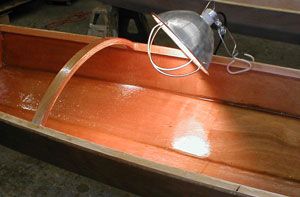
USE THESE THEORETICAL FACTORS THAT RELATES TO ANY UNDILUTED EPOXY RESIN AS A GUIDE:
|
1 GALLON = 231 CUBIC INCHES |
|
1 GALLON OF RESIN CAN COVERS 1608 SQUARE FEET 1 MIL OR 0.001 INCH CURED COATING THICKNESS |
|
1 GALLON OF RESIN IS 128 OUNCES |
|
1 GALLON OF MIXED EPOXY RESIN IS 9.23 POUNDS |
|
1 GALLON OF RESIN IS 3.7854 LITERS |
CAUTION
ALTHOUGH THE POLYMERZATION HAS SLOWED DUE TO THE COLDER AMBIENT CONDITIONS MIXING THE RESIN AND CURING AGENT ABOVE 80°F AS IT WILL CAUSE RAPID POLYMERIZATION AND HIGH EXOTHERMIC HEAT BUILD-UP THAT CAN EXCEED 300°F EXOTHERMIC HEAT WHEN KEPT IN MASS.
DO NOT HEAT AND MIX THE RESIN OR CURING AGENT BEYOND 90°F AS IT MAY CAUSE RAPID AND UNCONTROLLABLE REACTION. THE BEST WORKING CONDITION IS TO PREWARM THE RESIN AND CURING AGENT TO 70°F TO 75°F PRIOR TO MIXING AND ALLOW IT TO CURE AT AN AMBIENT TEMPERATURE NO LOWER THAN 65°F FOR AT LEAST 24 HOURS.
PLACE THE CURSOR ON THE PICTURE TO ACTIVATE VIEWING CONTROLS
ADOBE FLASH PLAYER MUST BE INSTALLED
THE PROPER CURE AND FINAL PERFORMANCE OF ANY EPOXY RESIN SYSTEM IS HIGHLY DEPENDENT ON THE QUALITY AND THOROUGHNESS OF THE MIXING QUALITY.
THE RESIN AND CURING AGENT MUST BE MIXED TO HOMOGENEOUS CONSISTENCY TO ACHIEVE PROPER CURE AND TACK FREE RESULTS.
OUR COMPUTER TO VIEW THE FOLLOWING SLIDE SHOWS AND VIDEOS.
BASIC EPOXY RESIN MIXING
AND
USAGE APPLICATIONS
PLEASE VIEW THE FOLLOWING VIDEO FOR THE PROPER MIXING OF EPOXY RESINS. IT DEMONSTRATES THE PROPER TECHNIQUE OF MIXING ANY TYPE OF EPOXY RESIN. THE PROPER CURE AND FINAL PERFORMANCE OF ANY EPOXY RESIN SYSTEM IS HIGHLY DEPENDENT ON THE QUALITY AND THOROUGHNESS OF THE MIX. THE RESIN AND CURING AGENT MUST BE MIXED TO HOMOGENEOUS CONSISTENCY
CLICK ON THE PICTURE TO PAUSE OR PLAY SLIDE SHOW
THE PROPER CURE AND FINAL PERFORMANCE OF ANY EPOXY RESIN SYSTEM IS HIGHLY DEPENDENT ON THE QUALITY AND THOROUGHNESS OF THE MIXING QUALITY. THE RESIN AND CURING AGENT MUST BE MIXED TO HOMOGENEOUS CONSISTENCY TO ACHIEVE PROPER CURE AND TACK FREE RESULTS.
OTHER MAX 1618 APPLICATIONS
MAX 1618 A/B THICK COATINGS APPLICATION ON WOOD PLAQUES BAR TOPS AND COUNTER TOPS
The coverage will depend on 3 basic factors:
1. The thickness of the coating measuring from an
impermeable substrate
The type of substrate or material
Will it absorb the liquid coating or not
The surface profile or roughness
The surface tension of the substrate
2. The method of application that will dictate the
USAGE or LOSS FACTOR
Spraying the coating has the highest loss factor
Roll coating is less
Brush applied is even less
Flow coating yield the lowest material loss factor
3. Solids content; the MAX 1618 A/B is 100% solids meaning it does not contain any volatile solvents or nothing evaporates from the applied coating
COVERAGE CALCULATION GUIDE
USE THESE THEORETICAL FACTORS TO DETERMINE COVERAGE OF ANY UNFILLED EPOXY RESIN
TO DETERMINE COVERAGE ON A FLAT SMOOTH SURFACE, CALCULATE THE LENGTH X WIDTH X THICKNESS IN INCHES
TO OBTAIN THE CUBIC VOLUME INCH OF THE MIXED RESIN NEEDED.
USE THE FOLLOWING EQUATION:
1 GALLON OF RESIN CAN COVERS 1604 SQUARE FEET
PER 1 MIL OR 0.001 INCH CURED COATING THICKNESS
(LENGTH X WIDTH X COATING THICKNESS)/ 231 CUBIC INCHES PER GALLON = CUBIC INCHES OF COATING NEED
FOR EXAMPLE
50 INCHES X 36 INCHES X 0.010 (10 MILS) = 18 CUBIC INCHES
18/231= .0779 GALLON OF MIXED RESIN
USE THE FOLLOWING FACTORS TO DETERMINE THE GALLON NEEDED AND THE CONVERT IT TO THE APPROPRIATE VOLUME OR WEIGHT:
FOR EXAMPLE:
231 X .0779 = 17.99 CUBIC INCHES
OR
4195 GRAMS X .0779 = 326.79 GRAMS
FLUID GALLON VOLUME CONVERSION |
1 GALLON = 231 CUBIC INCHES 1 GALLON = 128 OUNCES 1 GALLON= 3.7854 LITERS 1 GALLON= 4 QUARTS 1 GALLON= 16 CUPS |
FLUID GALLON TO MASS CONVERSIONS |
1 GALLON OF MIXED UNFILLED EPOXY RESIN = 9.23 POUNDS 1 GALLON OF MIXED UNFILLED EPOXY RESIN = 4195 GRAMS |
COMPOSITES FABRICATION APPLICATIONS
10" x 10" panel = 12K 2x2 Twill Weave Carbon Fiber Panel 12 Plies
Impregnated with MAX 1618 A/B Vacuum Bag Laminated
TO PAUSE OR PLAY THE FOLLOWING SLIDE SHOWS,
PLACE THE CURSOR ON THE PICTURE TO ACTIVATE VIEWING CONTROLS
Tail Fin = 3K 2x2 Twill Weave Carbon Fiber Impregnated with
MAX 1618 A/B Vacuum Infused
ADOBE FLASH PAYER MUST BE INSTALLED IN YOUR BROWSER
http://get.adobe.com/flashplayer/
TO PAUSE OR PLAY THE FOLLOWING SLIDE SHOWS, PLACE THE CURSOR
ON THE PICTURE TO ACTIVATE VIEWING CONTROLS
By resolute definition, a fabricated COMPOSITE material is a manufactured collection of two or more ingredients or products intentionally combined to form a new homogeneous material that is defined by its performance that should uniquely be greater than the sum of its individual parts. This method is also defined as SYNERGISTIC COMPOSITION.
COMPOSITE MATERIAL COMPOSITION
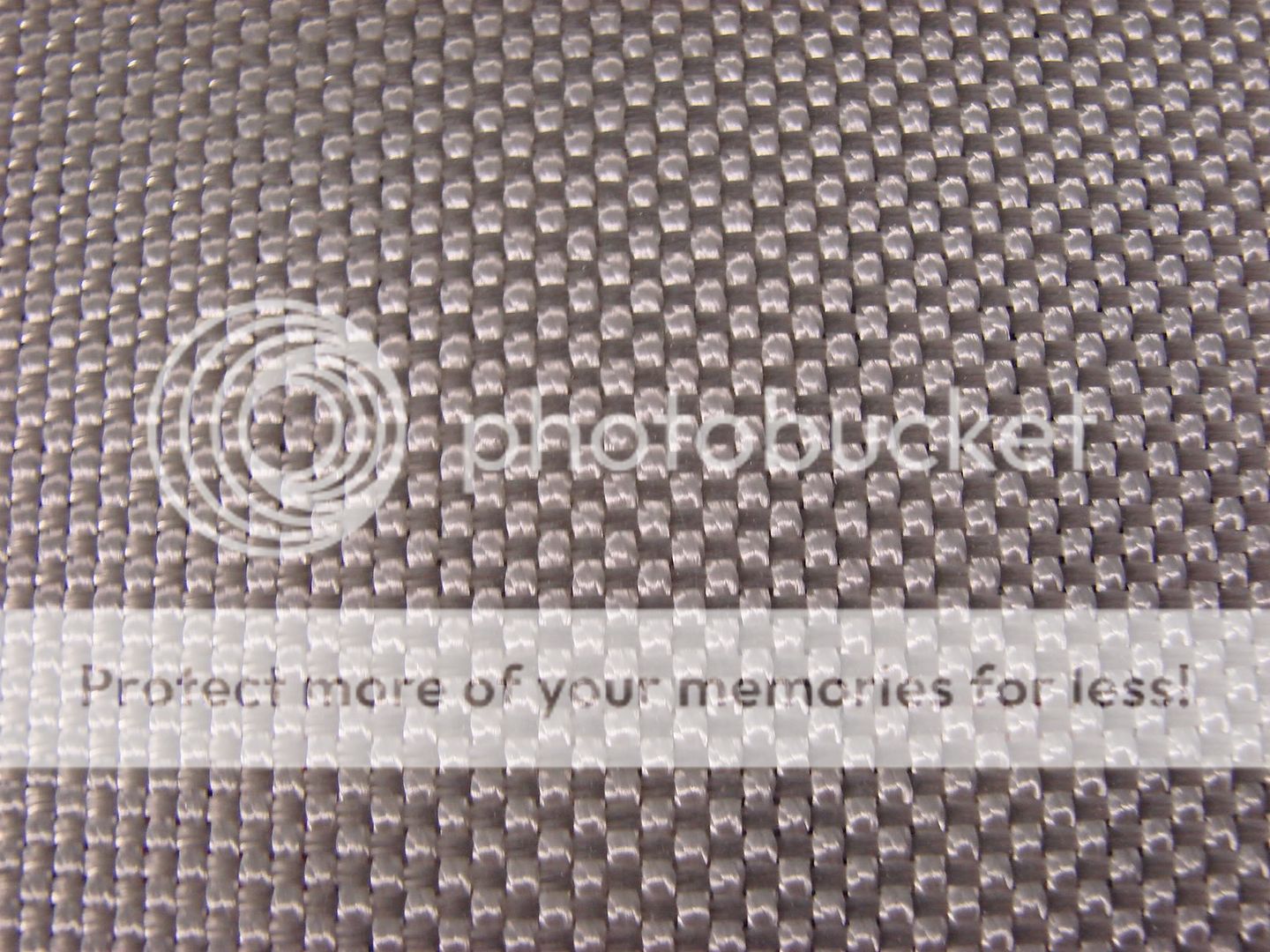 PLUS
PLUS
ENGINEERED PROCESS
EQUALS
STRUCTURAL STRENGTH COMPOSITE LAMINATE

PLACE CURSOR ON THE PICTURE TO PAUSE AND PLAY SLIDE SHOW
With respect to the raw materials selection( fabric and resin), the fabricating process and the intended composite properties, these 3 aspects must be carefully considered and in the engineering and manufacturing phase of the composite.
The following are some of the basic steps and guidelines for consideration.
STEP ONE: FABRIC SELECTION
TYPES OF FABRIC WEAVE STYLE AND SURFACE FINISHING
FOR RESIN TYPE COMPATIBILITY
|
PLAIN WEAVE Is a very simple weave pattern and the most common style. The warp and fill yarns are interlaced over and under each other in alternating fashion. Plain weave provides good stability, porosity and the least yarn slippage for a given yarn count. |
8 HARNESS SATIN WEAVE The eight-harness satin is similar to the four-harness satin except that one filling yarn floats over seven warp yarns and under one. This is a very pliable weave and is used for forming over curved surfaces. |
4 HARNESS SATIN WEAVE The four-harness satin weave is more pliable than the plain weave and is easier to conform to curved surfaces typical in reinforced plastics. In this weave pattern there is a three by one interfacing where a filling yarn floats over three warp yarns and under one. |
2x2 TWILL WEAVE Twill weave is more pliable than the plain weave and has better drivability while maintaining more fabric stability than a four or eight harness satin weave. The weave pattern is characterized by a diagonal rib created by one warp yarn floating over at least two filling yarns. |
|
|
|
|
|
|
RESIN COMPATIBILITY |
|
Clark Schwebel |
J.P Stevens |
Uniglass Industries |
|
Epoxy, Polyester |
VOLAN A |
VOLAN A |
VOLAN A |
VOLAN A |
|
Epoxy, Polyester |
I-550 |
CS-550 |
S-550 |
UM-550 |
|
Phenolic, Melamine |
I-588 |
A1100 |
A1100 |
A1100 |
|
Epoxy, Polyimide |
I-589 |
Z6040 |
S-920 |
UM-675 |
|
Epoxy |
I-399 |
CS-272A |
S-935 |
UM-702 |
|
Epoxy |
|
CS-307 |
|
UM-718 |
|
Epoxy |
|
CS-344 |
|
UM-724 |
|
Silicone |
112 |
112 |
|
n-pH (neutral pH) |
These styles of fabrics are one of the easiest fabrics to use and it is ideal for laying up cowls, fuselages, ducts and other contoured surfaces with minimal distortions. The fabric is more pliable and can comply with complex contours and spherical shapes. Because of its tight weave style, satin weaves are typically used as the surface ply for heavier and courser weaves. This technique helps reduce fabric print through and requires less gel coat to create a smoother surface.
Use this weave style cloth when high strength parts are desired.
It is ideal for reinforcement, mold making, aircraft and auto parts tooling, marine and other composite lightweight applications.

CLICK ON THE PICTURE TO PAUSE OR PLAY SLIDE SHOW
MAX BOND THIXOTROPIC 64-OUNCE KIT
MAX BOND LOW VISCOSITY A/B MARINE GRADE STRUCTURAL EPOXY RESIN
MAX HTE A/B HIGH TEMPERATURE EPOXY RESIN SYSTEM
MAX PCR A/B WOOD ROT REPAIR & PROTECTIVE COATING RESIN
MAX GRE A/B GASOLINE RESISTANT EPOXY RESIN
MAX GPE A/B CLEAR LOW COST GENERAL PURPOSE EPOXY RESIN
MAX CLR CLEAR LIQUID RESIN SYSTEM**
LOW VISCOSITY VERSION EXTENDED POT LIFE AND IMPROVED FLEXIBILITY
30% FASTER SETTING VERSION
MAX CLR FAST SETTING 24 OUNCE KIT
MAX BOND LOW VISCOSITY FOR MARINE APPLICATIONS
MAX GPE FOR GENERAL CONSTRUCTION LOW COST APPLICATIONS
SAFE TO USE ON POLYSTYRENE FOAM
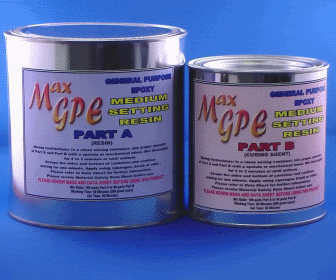
MAX CLR HP CRYSTAL CLEAR HIGH PERFORMANCE APPLICATION
Step Three: Proper
Lay-Up Technique
Pre-Lay-Up notes:
Lay out the fabric and precut to size and set aside
Avoid distorting the weave pattern as much as possibleFor fiberglass molding, insure the mold is clean and adequate mold release is usedView our video presentation "MAX EPOXY RESIN MIXING TECHNIQUE"Mix the resin only when all needed materials and implements needed are ready and within reach
Mix the proper amount of resin needed and be accurate proportioning the resin and curing agent. Adding more curing agent than the recommended mix ratio will not promote a faster cure. Over saturation or starving the fiberglass or any composite fabric will yield poor mechanical performance. When mechanical load or pressure is applied on the composite laminate, the physical strength of the fabric should bear the stress and not the resin. If the laminate is over saturated with the resin it will most likely to fracture or shatter instead of rebounding and resist damage.
Don’t how much resin to use to go with the fiberglass?
A good rule of thumb is to maintain a minimum of 30 to 35% resin content by weight, this is the optimum ratio used in high performance prepreg (or pre-impregnated fabrics) typically used in aerospace and high performance structural application.For general hand lay-ups, calculate using 60% fabric weight to 40% resin weight as a safe factor. This will insure that the fabricated laminate will be below 40% resin content depending on the waste factor accrued during fabrication.
Place the entire precut fiberglass to be used on a digital scale to determine the fabric to resin weight ratio. Measuring by weight will insure accurate composite fabrication and repeatability, rather than using OSY data.
Typical fabric weights regardless of weave pattern
1 yard of 8 OSY fabric at 38 inches wide weighs 224 grams
1 yard of 10 OSY fabric at 38 inches wide weighs 280 grams
Ounces per square yard or OSY is also know as aerial weight which is the most common unit of measurement for composite fabrics.
To determine how much resin is needed to adequately impregnate the fiberglass, use the following equation:
(Total Weight of Fabric divided by 60%)X( 40%)= weight of mixed resin needed
OR
fw= fabric weight
rc= target resin content
rn=resin needed
MASTER EQUATION
(fw/60%)x(40%)=rn
FOR EXAMPLE
1 SQUARE YARD OF 8-OSY FIBERGLASS FABRIC WEIGHS 224 GRAMS
(224 grams of dry fiberglass / 60%) X 40% = 149.33 grams of resin needed
So for every square yard of 8-ounce fabric,
It will need 149.33 grams of mixed resin.
Computing for resin and curing agent requirements based on
149.33 grams of resin needed
MIX RATIO OF RESIN SYSTEM IS 2:1 OR
50 PHR (per hundred resin)
2 = 66.67% (2/3)
+
1 = 33.33%(1/3)
=
(2+1)=3 or (66.67%+33.33%)=100% or (2/3+1/3)= 3/3
149.33x 66.67%= 99.56 grams of Part A RESIN
149.33 x 33.33%= 49.77 grams of Part B Curing Agent
99.56+ 49.77 = 149.33 A/B MIXTURE
A 4 X 8 FEET 3/8 INCH
THICK FIBERGLASS PANEL WAS FABRICATED WITH 18 PLIES OF 24 OUNCE
FIBERGLASS ROVING IMPREGNATED WITH
MAX 1618 RESIN SYSTEM.
THE PANEL WAS VACUUM
CURED FOR 24 HOURS AT ROOM TEMPERATURE AND THEN POST CURED FOR 2 HOURS AT 200°F
AND THEN TESTED USING
ASTM D695 TEST PROCEDURE.







DETERMINATION OF FIBER TO RESIN RATIO
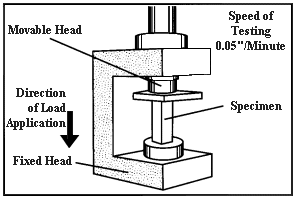
1 gallon of resin = 4239 grams (1.12 g/cc)
1 gallon = 128 fluid ounces
1 gallon of resin = 231 cubic inches
1 fluid ounce of resin = 33.17 grams
Apply the mixed resin unto the surface and then lay the fabric and allow the resin to saturate through the fabric.
NOT THE OTHER WAY AROUND
This is one of the most common processing error that yields sub-standard laminates. By laying the fiberglass unto a film of resin, less air bubbles are entrapped during the wetting-out stage. Air is pushed up and outwards instead of forcing the resin through the fabric which will entrap air bubbles. This technique will displace air pockets unhindered and uniformly disperse throughout the fiberglass with minimal mechanical agitation or spreading.
Note the slide show presentation
PLACE CURSOR ON THE PICTURE TO PAUSE AND PLAY SLIDE SHOW
Typical Fiberglass Reinforcing Technique Unto A Wood Substrate
PLACE CURSOR ON THE PICTURE TO PAUSE AND PLAY SLIDE SHOW
For Vacuum Bagging Process
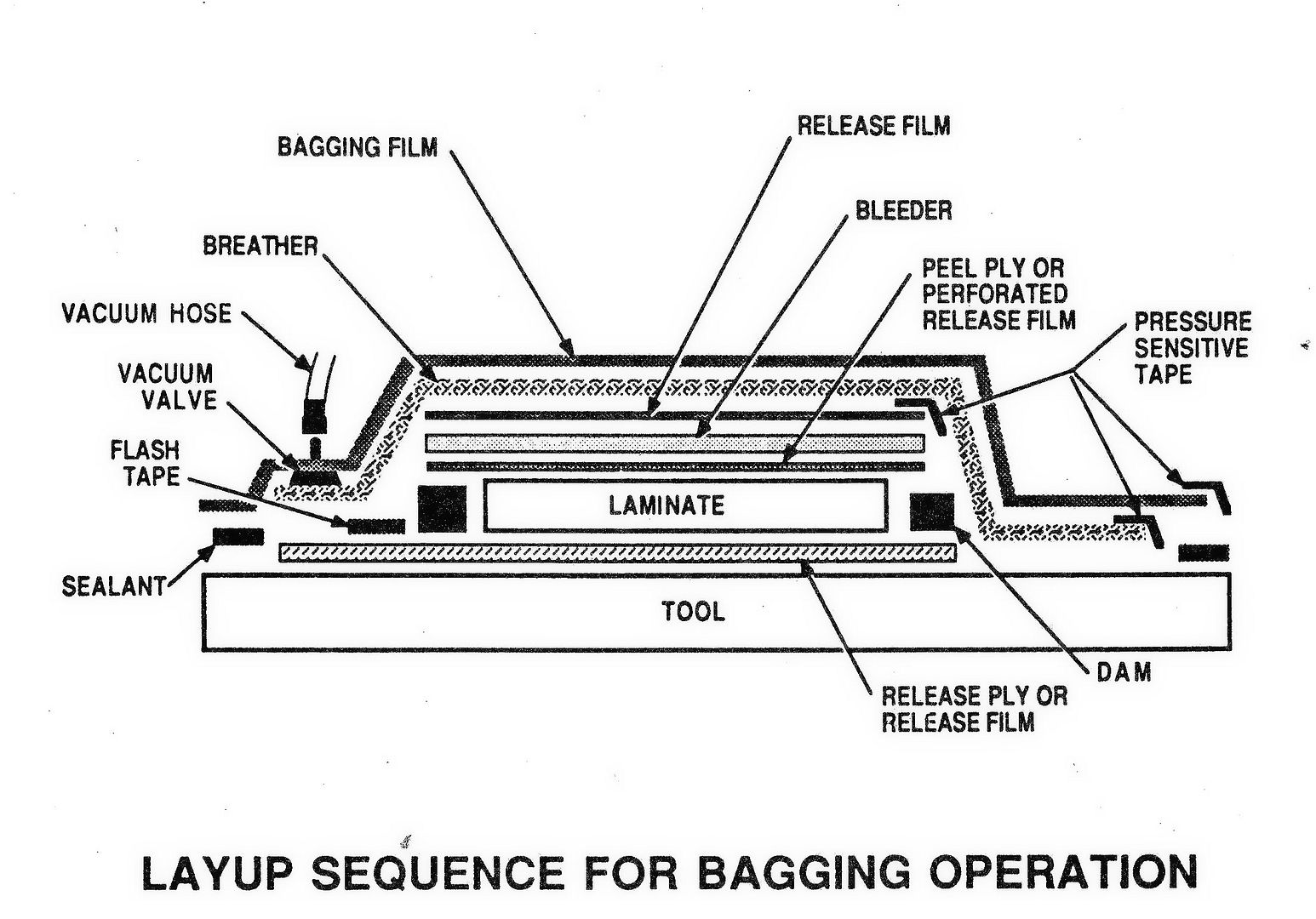
VACUUM BAGGING
INSTRUCTIONAL VIDEO
MAX BOND LOW VISCOSITY A/B
LAMINATE CONFIGURATION FLAT PANEL
USED FOR STRUCTURAL APPLICATIONS
ROOM TEMPERATURE CURED
HEXCEL 7781 9 OUNCE 8-HARNESS SATIN WEAVE TOP AND BOTTOM PLIE
PLUS
15 LAYERS CORE 24-OUNCE FIBERGLASS PLAIN WEAVE ROVING
LAMINATE CONFIGURATION CONTOURED SPEAKER ENCLOSURE
MAX CLR-HP A/B used
FOR CARBON FIBER CRYSTAL CLEAR HIGH PERFORMANCE SINGLE PLY 12-OUNCE 2X2 TWILL WEAVE CARBON FIBER
Given enough time and the proper selection of the fabric's surface treatment (fabric to resin compatibility), a dry fabric will seek a state equilibrium and distribute the applied resin and naturally release air bubbles entrapped within the laminate. It is then very important that the proper viscosity, working time and surface treatment of the fabric must be considered depending on the application of the composite structure. There are also fabricating techniques that can be employed to yield high performance laminates. Depending on the size of the part, processes such as high pressure pressing, vacuum bagging and vacuum assisted resin transfer molding are superior methods over hand dry lay-up. Air voids or porosity within the laminate is typically where failure propagates when load is applied(fracturing, compression failure, tearing, torque, tensile strength, creep).
VACUUM RESIN FUSION PROCESS WITH MAX 1618 A/B
STEP FOUR: PROPER CURING
Optimum cured properties can take up to 7 days depending on the ambient cure condition.
The ideal temperature cure condition of most room temperature epoxy resin is 22 to 27 degrees Celsius at 20% relative humidity.
Higher ambient curing temperatures will promote faster polymerization and development of cured mechanical properties.
Improving mechanical performance via post heat cure
A short heat post cure will further improve the mechanical performance of most epoxy resins. Allow the applied resin system to cure at room temperature until for 18 to 24 hours and if possible, expose heat cure it in an oven or other source of radiant heat (220°F to 250°F) for 45 minute to an hour. You can also expose it to direct sunlight but place a dark colored cover, such as a tarp or cardboard to protect it from ultraviolet exposure.
In general room temperature cured epoxy resin has a maximum operating temperature of 250°F and 160°F or lower if it is under stress or load.
A short heat post cure will insure that the mixed epoxy system is fully cured, especially for room temperature cured system that can take up to 7 days to 100% cure
Some darkening or yellowing of the epoxy resin may occur if over exposed to high temperature (>250 F).
AMINE BLUSH
The affinity of an amine compound (curing agent) to moisture and carbon dioxide creates a carbonate compound and forms what is called amine blush.
Amine blush is a wax-like layer that forms as most epoxies cure. If the epoxy system is cured in extreme humidity (>70%).
It will be seen as a white and waxy layer that must be removed by physical sanding of the surface followed by an acetone wipe.Although we have formulated the MAX CLR, MAX BOND and MAX GPE product line to be resistant to amine-blush, it is recommended not to mix any resin systems in high humidity conditions, greater than 70%.
Always make sure that the substrate or material the epoxy resin system is being applied to is as dry as possible to insure the best cured performance.
OTHER TYPES OF EPOXY RESIN CURE MECHANISM
LATENT CURING SYSTEMS
Latent epoxy resins are systems that are mixed together at room temperature and will begin polymerization but it will not achieve full cure unless it is exposed to a heat cure cycle. In general, these are high performance systems that demonstrate exceptional performance under extreme conditions such as high mechanical performance under heat and cryogenics temperatures, chemical resistance or any environment that epoxy room temperature system perform marginally or poorly.
Upon the mixing of the resin and curing agent polymerization will begin and will only achieve partial cure. Some resins may appear cured or dry to the touch, this state is called 'B-Stage Cure' ,but upon application of force will either be gummy or brittle almost glass-like and will dissolve in most solvents. The semi-cured resin must be exposed to an elevated temperature for it to continue polymerization and achieve full cure.
HEAT ACTIVATED CURING SYSTEMS
This type of epoxy system will not polymerized unless it is exposed to the activation temperature of the curing agent which can be as low as 200F and as high as 400F. In most instances these epoxy system can be stored at room temperature and remain liquid for up to six months and longer
USE AN INFRARED HEAT LAMP FOR LARGER PARTS IF A PROCESS OVEN IS NOT AVAILABLE
POSSIBLE HEAT CURING TECHNIQUES
If an oven is not available to provide the needed thermal post cure, exposing the assemble part to direct solar heat
(sun exposure) for a period will provide enough heat cure for the part to be handled.
Other heat curing such as infrared heat lamps can be used if a heat chamber or oven is not available.

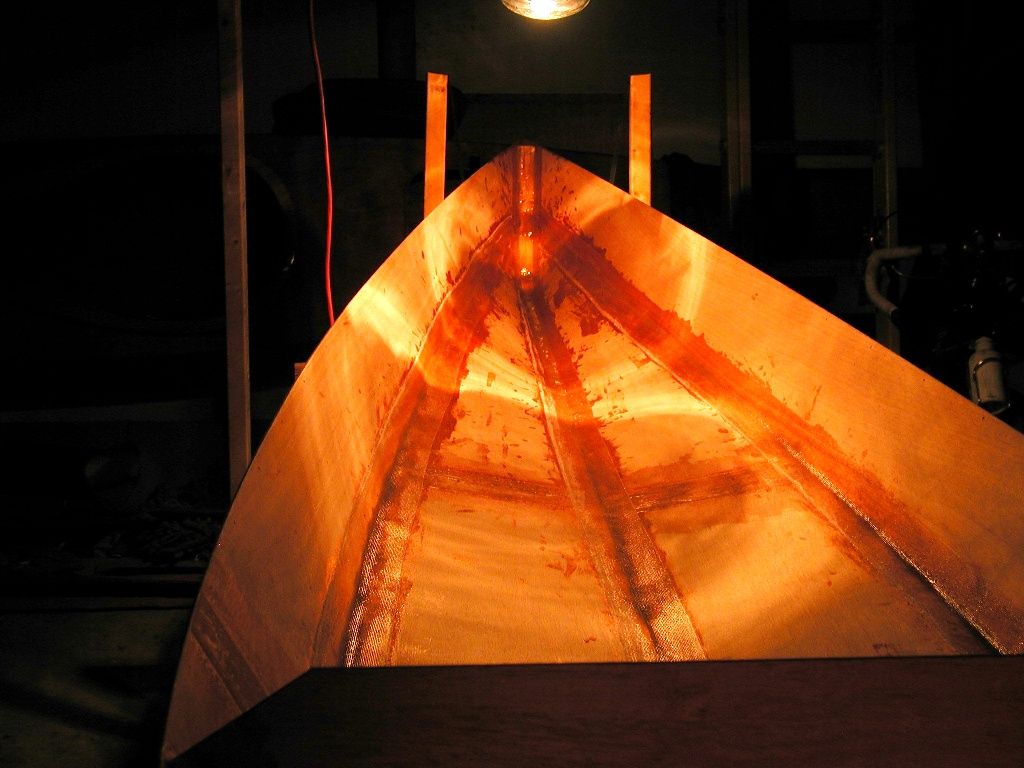
DON'T FORGET OUR EPOXY MIXING KIT
Our Epoxy Mixing Kit comes with all the necessary utensils and protective gloves needed for mixing, dispensing or applying any of our MAX EPOXY SYSTEM in one convenient kit.
Avoid Cross Contamination
Save Time
Measure Mix Ratio Accurately By Volume
Reusable
Safely Handle Chemicals
Use the included measuring cups to accurately measure the proper amount of Resin and Curing Agent.
The plastic mixing tubs are made from High Density Polyethylene (HDPE), which withstands the tenacity of the epoxy resin and curing agent.
The paper cups are wax-free and the plastic tub comes with air-tight lids that make it an excellent temporary storage container.
Upon cure, any residue demolds easily from the plastic tubs and can be reused.
As a general practice, protective gloves should be worn at all times when handling chemicals.
Our MAX EPOXY MIXING KIT comes with 5 pairs of powder free Latex Gloves to protect the user from direct contact with the epoxy resin system that will reduce sensitization or contact dermatitis.
(CAUTION; an appreciable amount of people are highly allergic to latex materials.
Please be aware that the gloves included in this kit are not tested for latex sensibility, please visit
www.nyallergy.com/latex.php
for more details

MIXING KIT CONTENTS




For our complete listing, please visit our eBay store!
FOR TECHNICAL ASSISTANCE
TOLL FREE
877 403 8008
Monday to Friday
10:00 AM to 4:00 PM Pacific Standard Time
Hundreds of posted pictures from many other applications with our MAX EPOXY SYSTEM
THANKS FOR STOPPING BY
NEED MORE INFORMATION?
Please visit our YouTube Channel to view our video demonstrations
IMPORTANT NOTICE
Your purchase constitutes the acceptance of this disclaimer . Please review before purchasing this product.
The user should thoroughly test any proposed use of this product and independently conclude satisfactory performance in the application. Likewise, if the manner in which this product is used requires government approval or clearance, the user must obtain said approval. The information contained herein is based on data believed to be accurate at the time of publication. Data and parameters cited have been obtain through publish information, PolymerProducts and Polymer Composites Inc. laboratories using materials under controlled conditions. Data of this type should not be used for specification for fabrication and design. It is the user's responsibility to determine this Composites fitness for use. There is no warranty of merchantability of fitness of use, nor any other express implied warranty. The user's exclusive remedy and the manufacturer's liability are limited to refund of the purchase price or replacement of the product within the agreed warranty period. Polymer Composites Inc.,Polymer Products and its direct representative will not be liable for incidental or consequential damages of any kind. Determination of the suitability of any kind of information or product for the use contemplated by the user, the manner of that use and whether there is any infringement of patents is the sole liability of the user.
